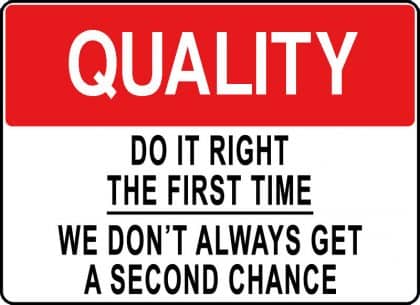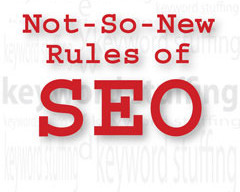Google’s search engine algorithms are updated several times a year – averaging 2 to 3 times per day. When a major change to Google rolls out and your website’s rankings or traffic significantly change up or down (more than just a few ranking positions) when there haven’t been any noteworthy changes to the site or the links to it, there’s a good chance an algorithm update has hit your website.
In the past, Google would sometimes announce major updates and give some clues as to what they were about. For example, the Penguin algorithm update targeted “webspam“, while Panda was designed to limit the visibility of “low quality” web pages in the search results.
 These days, most of the algorithm updates go unannounced. When asked, Google just says they are “quality updates”. Google spokestweeter, Gary Ilyes, joked that all future updates would be called “Fred” in response to rumors of an algorithm update on March 8th, 2017. Fred was later confirmed to be quality oriented. Rumored updates on May 17th, June 25th, and July 9th are unconfirmed, but are believed to have something to do with quality.
These days, most of the algorithm updates go unannounced. When asked, Google just says they are “quality updates”. Google spokestweeter, Gary Ilyes, joked that all future updates would be called “Fred” in response to rumors of an algorithm update on March 8th, 2017. Fred was later confirmed to be quality oriented. Rumored updates on May 17th, June 25th, and July 9th are unconfirmed, but are believed to have something to do with quality.
If you are confused, you are not alone. Aren’t all the algorithm updates about improving the quality of search results? Or maybe they mean it has something to do with the quality of the websites Google chooses to show. That leaves many SEOs and website owners scratching their heads, wondering what Google means by “quality”.
Like many things in SEO, you might be overthinking it and overlooking some obvious quality issues.
Use Your Website Correctly
Just because you can do something, does not mean you should.
There are some parts of a website’s code which are used to help search engines understand what the webpage is about. Unfortunately, SEOs and webmasters sometimes forget the intended purpose of them, or intentionally try to use them in unorthodox ways to trick the search engines. Misuse of key parts of a website is the number one reason websites get hit by these algorithm updates that focus on quality.
If your website has original and well written content, you haven’t done any questionable link building, but you lost search engine rankings and organic search traffic at the time of a suspected or confirmed quality update, here are a few things to check:
The Title Element or “Title Tag”
The title element, or “SEO Title” as many SEO plugins and tools call it, is one of the most important on page elements for SEO. This is what shows up as the link to your page in Google’s search results. It should accurately describe the page, and you should treat it like the headline of an ad so it makes people want to click on it. You can (and probably should) use a good keyword in it, but don’t try to stuff several keywords into the title, or make it just a list of variations of that keyword. That does not work like you may think it would. A keyword-stuffed title signals “low quality ahead” to Google and people who see it. Furthermore, if Google’s algorithm decides that there is something wrong with your title element, they may make up their own title to show users. That causes your attempt to manipulate the search results via a keyword stuffed title to fail – you don’t get the title or the rankings you wanted.
See what Google says about Creating Good Titles.
The Meta Description
This is where you get the opportunity to choose the description that may be shown under your link in the search results. The meta description does NOT have any influence on how your page is ranked, but it can influence whether Google shows your hand-crafted, click-inducing, amazing meta description instead of its own choice of text from your page.
This is what people see in the search results, so you want to make a good impression. What you say in the meta description is often what makes a searcher decide to click on your site instead of one of the competitors. If your meta description is just a bunch of keywords that don’t make sense, that gives a bad impression. Like a keyword stuffed title or text copy, a poorly written meta description signals poor quality.
Read: Google’s explanation of how it uses the meta description.
Image Alt Attributes or “Alt Tags”
Every image within the content of your website should have alt attributes. The purpose of alt tags is to explain what is in the image to people who can’t view it. The image alt attribute was originally intended for visually impaired people using screen reader software, and people on very slow internet connections. Search engines also use image alt tags to catalog the photos and graphics in their indexes, as well as an aid in understanding what the page is about. Used wisely, img alt attributes can be a big help in improving your SEO. Stuffing alt tags full of keywords that have little or nothing to do with what is in the image can hurt your rankings and traffic, badly. Every alt tag that has an irrelevant keyword instead of an accurate description is a lie. Webpages that are full of lies are definitely not “good quality.
Pro tip: Choose images that depict a keyword that is relevant to the page. If you could reasonably argue that it’s a picture of the thing you are trying to sell or rank for, it is perfectly fine to label it that way in the alt attribute.
Check out: Google’s Image Publishing Guidelines.
Duplicate Content
There isn’t a specific penalty for having the same content in multiple places on your website, but why repeat the same things over and over? Just like you wouldn’t use the same text repeatedly on a printed brochure, keep your website’s message clear.
What do these things have in common?
All of these quality issues can be prevented with a little common sense. Pretend that there is no Google – or at least pretend that Google does not rank sites and that it just shows them randomly. Imagine viewing your site through the eyes of a stranger. How does it look? Does everything make sense? Does everything you have done to try to rank higher in Google still make sense in a world without search engine rankings? Trying too hard to manipulate search results by overusing keywords and misusing the tools at your disposal is at the root of all the ranking and traffic drops that occur after a Google algorithm update.
Your website is a marketing tool. Make sure it says what you want to say, effectively and without confusion. If you strive for making your website the best piece of your marketing strategy, chances are you will never have to worry about a Google quality update again.
Still confused? Ker Communications can help. Get a professional SEO audit or contact us to find out what we can do for you.



